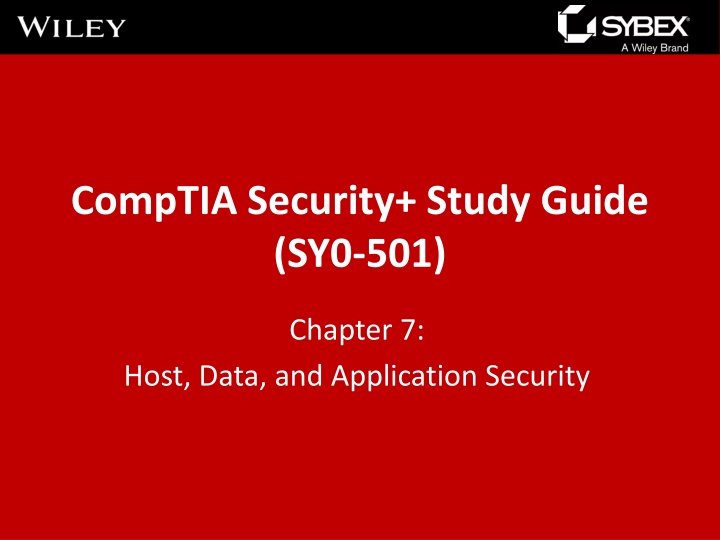
Exploring Host, Data, and Application Security Measures
Dive into the world of cybersecurity in Chapter 7 of the CompTIA Security+ Study Guide (SY0-501). Understand threat actor types, vulnerabilities, embedded systems security, secure application development, and more.
Download Presentation

Please find below an Image/Link to download the presentation.
The content on the website is provided AS IS for your information and personal use only. It may not be sold, licensed, or shared on other websites without obtaining consent from the author. If you encounter any issues during the download, it is possible that the publisher has removed the file from their server.
You are allowed to download the files provided on this website for personal or commercial use, subject to the condition that they are used lawfully. All files are the property of their respective owners.
The content on the website is provided AS IS for your information and personal use only. It may not be sold, licensed, or shared on other websites without obtaining consent from the author.
E N D
Presentation Transcript
CompTIA Security+ Study Guide (SY0-501) Chapter 7: Host, Data, and Application Security
Chapter 7: Host, Data, and Application Security Explain threat actor types and attributes Explain the impact associated with types of vulnerabilities Explain the security implications of embedded systems Summarize secure application development and deployment concepts
Threat Actors and Attributes Script kiddies Hacktivist Organized crime Nation-states/APT Insiders Competitors
Use of Open Source Intelligence ThreatCrowd OpenPhish OSINT framework Shodan
Types of Vulnerabilities Configuration issues User issues Zero-day exploits Other issues
Embedded Systems Security IoT: Internet of Things
Application Vulnerabilities Input vulnerabilities Memory vulnerabilities
Secure Programming Prototyping
Specific Types of Software Testing Unit testing Integration testing System testing User acceptance testing Regression testing
Patch Management Hotfix Patch Service pack
Database Tier Models One-tier model Two-tier model Three-tier model
